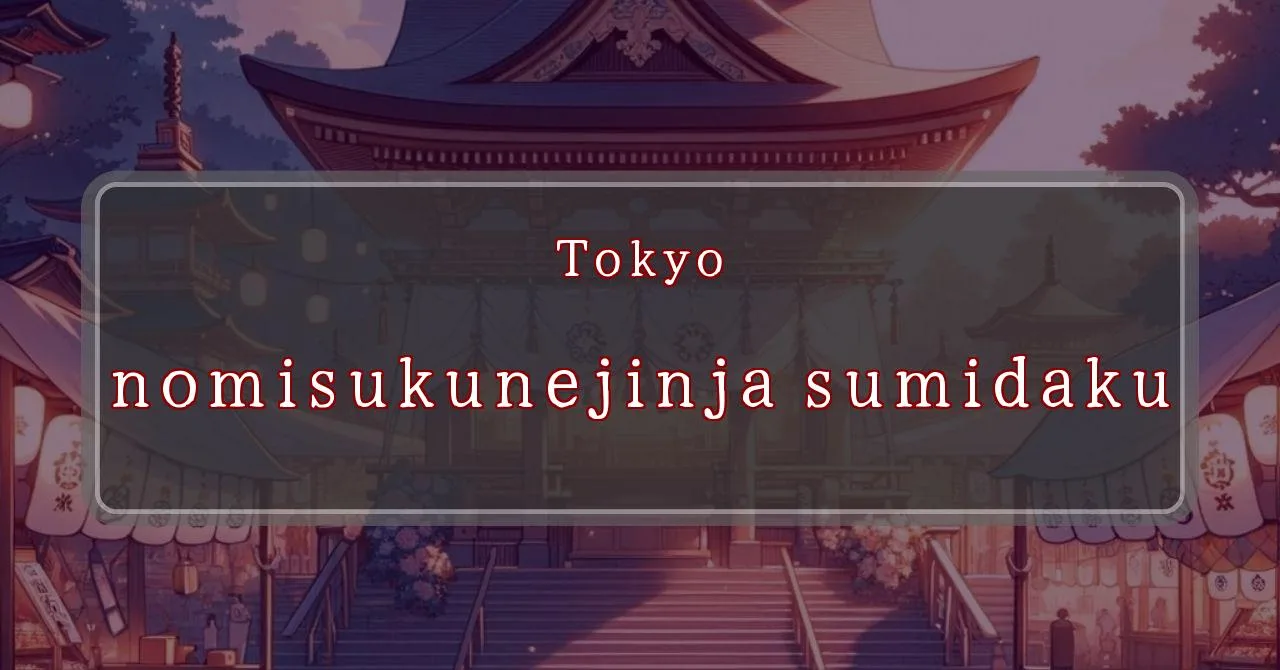Sumida’s shrine festival with 100 years of history
Basic Information
Here’s a detailed overview of the festival.
- Name:
- Address:
- Phone Number:
- Access:
- Festival Days:
Nomi-no-Sukune Shrine
2-8-10 Kamezawa, Sumida-ku, Tokyo 130-0014
03-3623-8572
10-minute walk from 両国駅 (Ryogoku Station) on the JR Sobu Line or Toei Oedo Line
Early May (Reiwa 6)
Main Events and Attractions of the Festival
Here are the main highlights of the festival:
Mikoshi Procession
Overview: The highlight of the festival is the mikoshi procession, where a portable shrine is paraded through the streets of Sumida Ward. The mikoshi is carried by groups of people, and it is believed that participating in the procession will bring good luck and ward off evil spirits.
- Content: A parade of a portable shrine through the streets of Sumida Ward
- Purpose: To bring good luck and ward off evil spirits
Sumo Demonstration
Overview: As Nomi-no-Sukune Shrine is dedicated to the god of sumo wrestling, a sumo demonstration is held during the festival. Visitors can watch professional sumo wrestlers perform traditional sumo techniques and learn more about the history and culture of sumo wrestling.
- Content: A demonstration of sumo wrestling techniques by professional sumo wrestlers
- Purpose: To promote sumo wrestling and educate visitors about its history and culture
Food Stalls
Overview: During the festival, various food stalls are set up around the shrine, offering a wide variety of Japanese street food and traditional snacks. Visitors can enjoy delicious food and drinks while enjoying the festive atmosphere.
- Content: A variety of food stalls selling Japanese street food and traditional snacks
- Purpose: To provide visitors with a culinary experience and enhance the festive atmosphere
Blessings and Deities
Here are the blessings and deities associated with Nomi-no-Sukune Shrine:
- Deity: Nomi-no-Sukune
- Blessings: Sumo wrestling, victory, good luck, physical strength
Nomi-no-Sukune is a legendary figure in Japanese mythology known for his immense strength and sumo wrestling skills. He is revered as the patron deity of sumo wrestling and is believed to bestow blessings of victory, good luck, and physical strength to those who worship him.
Origin and History
The origins of Nomi-no-Sukune Shrine can be traced back to the Edo period. In 1884, a sumo wrestling stable called Takasago Beya was located near the current site of the shrine. The head of the stable, Takasago Uragoro, was a prominent sumo wrestler who played a significant role in the development of sumo wrestling. He is credited with establishing the shrine to honor Nomi-no-Sukune and to pray for the success of sumo wrestlers.
- Established: 1884
- Founder: Takasago Uragoro
- Purpose: To honor Nomi-no-Sukune and pray for the success of sumo wrestlers
Tips and Notes for Visitors
Here are some tips and notes for visitors to Nomi-no-Sukune Shrine:
- Festival: The shrine’s annual festival is held in early May. During the festival, there is a mikoshi procession, a sumo demonstration, and various food stalls.
- Access: The shrine is a 10-minute walk from Ryogoku Station on the JR Sobu Line or Toei Oedo Line.
- Hours: The shrine is open from 9:00 AM to 5:00 PM daily.
- Admission: Admission to the shrine is free.
- Photography: Photography is allowed inside the shrine, but please be respectful of other visitors and avoid using flash photography.
Parking Information
There is no parking lot at Nomi-no-Sukune Shrine. Visitors are advised to use public transportation or park in nearby coin-operated parking lots.
Popular Stalls and Food Carts in Recent Years
| Type of Stall | Description |
|---|---|
| Takoyaki | A staple at Japanese festivals. Characterized by a crispy outside and a creamy inside. |
| Jaga Butter | A simple yet popular snack of hot potatoes lavishly topped with melted butter. |
| Baby Castella | Small castella cakes, sweet and fluffy treats enjoyed by children and adults alike. |
| Grilled Ayu with Salt | Fresh ayu fish grilled whole with salt, a savory taste of Japanese summer. |
| Shaapin | A unique gourmet item influenced by foreign cuisine, with a chewy skin wrapping the filling. |
| Okonomiyaki | A Japanese grilled dish where you often choose your own ingredients for a personalized flavor. |
| Cotton Candy | A fluffy, sweet snack that’s extremely popular with children. |
| Chocolate Banana | A banana coated in chocolate, a fun and visually appealing dessert. |
| Kushiyaki | Various types of ingredients skewered and grilled, an easy-to-enjoy snack. |
| Yakisoba | Fried noodles mixed with a special sauce, a fast food favorite in Japan. |



